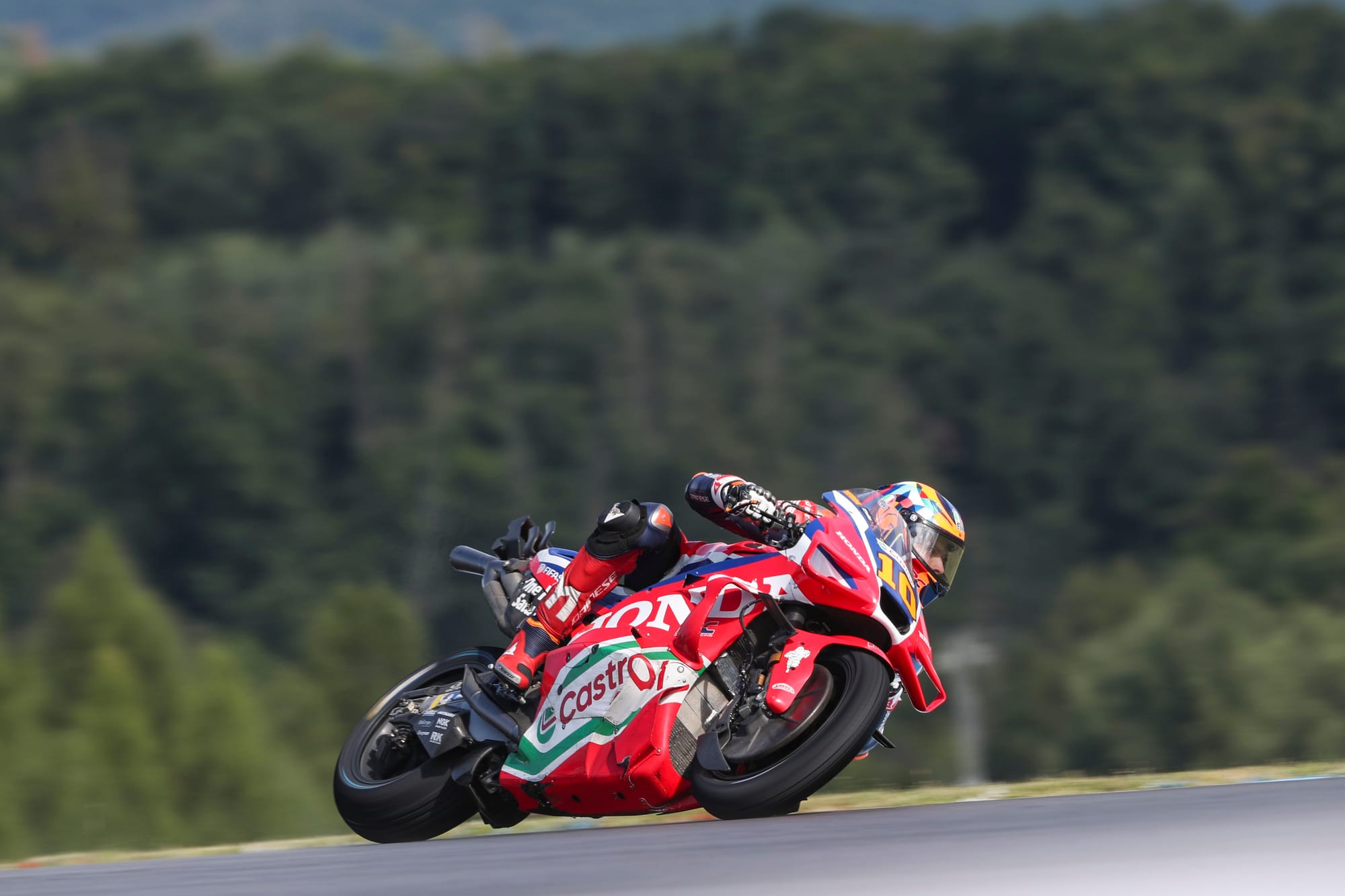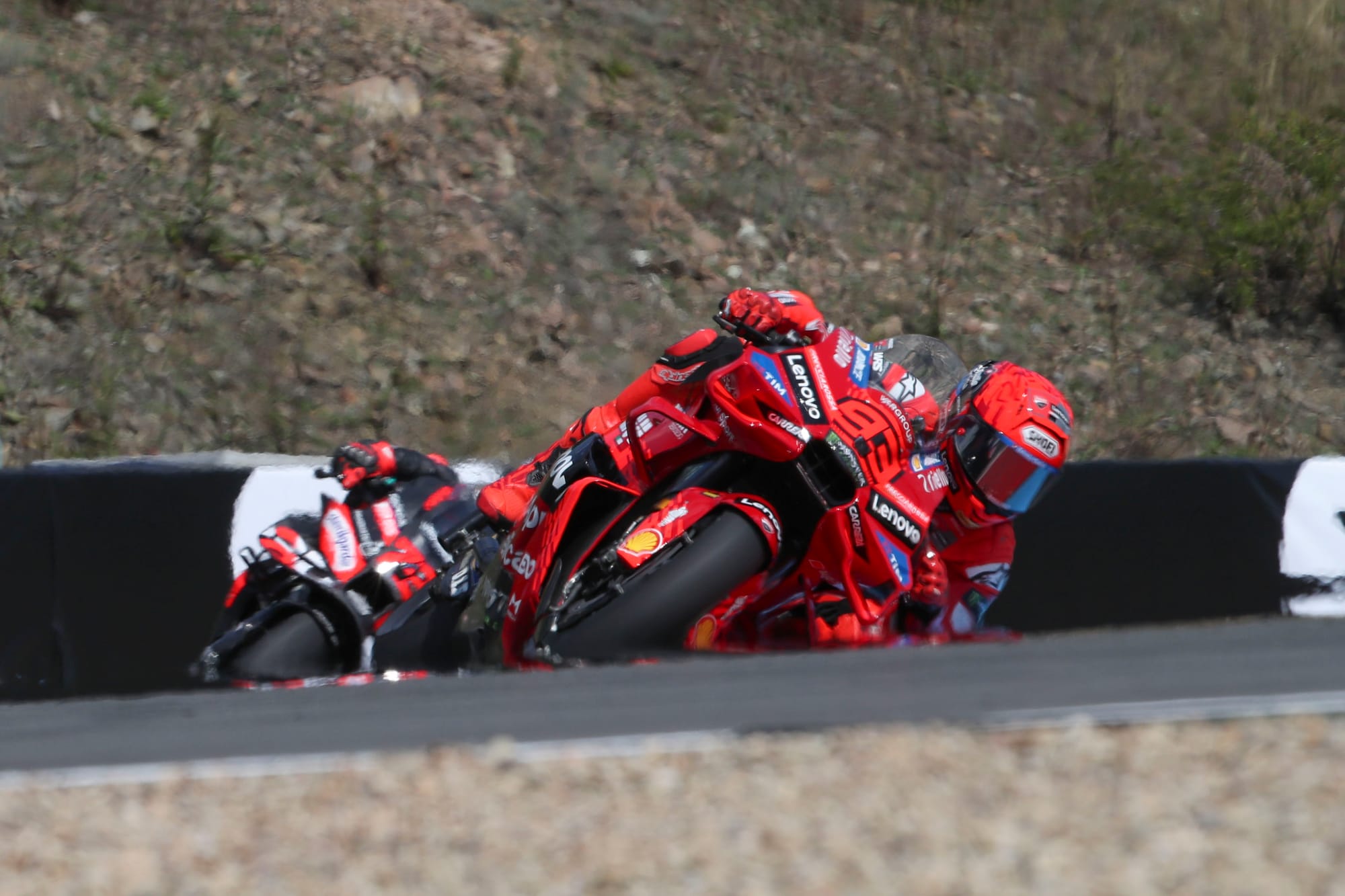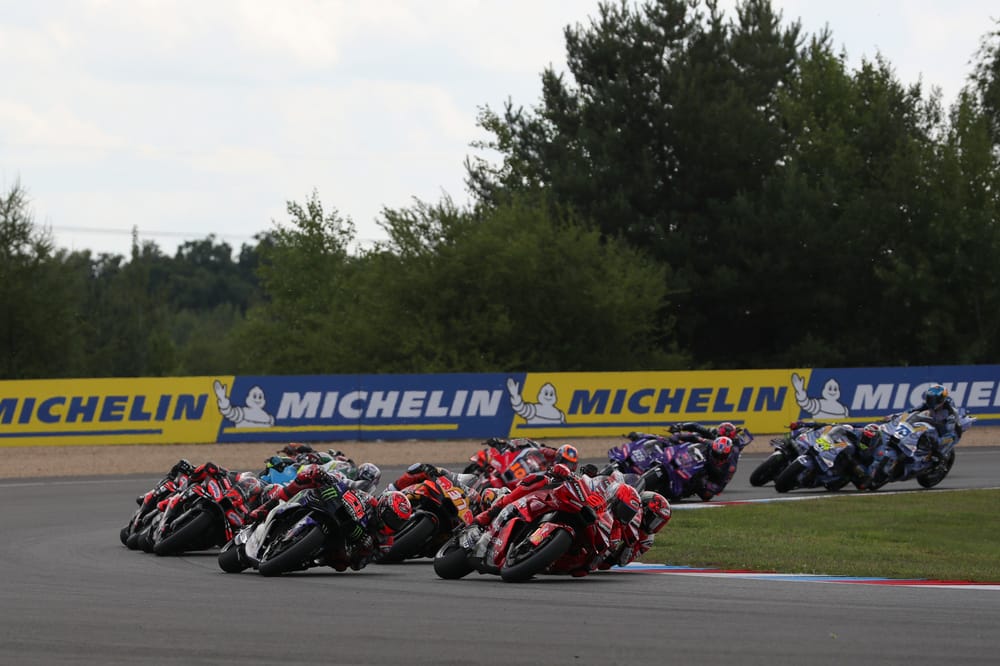The introduction of a new stability control system to the unified electronics software all MotoGP teams must use has been met with a mixed reaction from the grid, with championship leader Marc Marquez among those opposed to it.
While some riders are welcoming it, as they believe will make their job easier, others including Marquez are concerned about yet more control being handed over from the racer to the computer.
The new system functions by reducing engine torque and power when it detects the rear tyre of the bike sliding, similar to what traction control does when it detects the tyre spinning in a straight line, and has been in development for some time during official tests.

"With the Michelin tyres, sometimes the problem is not that the tyre is spinning, just sliding," explained Honda rider Luca Marini.
"The spin is low, below your target value, but the slide is already more than you want. In some way, the slide control also puts a target in this way to stop it.
"It’s something interesting, because you're able to stop the slide somehow and you are able to make the bike turn without going over a certain amount of slide."
The ability to control the sliding of the rear tyre on corner entry has become a key facet of modern MotoGP, as ride height devices in particular have resulted in the bikes' wheelbases creeping up and up.
Instead of entering the corner with the rear in the air and the front doing most of the turning, as was common in the past, riders must now use both the front and rear brakes to manage both wheels at once in order to turn the longer machines, something that some are sure will present a benefit to them.
"I tested it a few months ago at Misano, and it was really positive for us," said Yamaha racer Fabio Quartararo. "On the electronics side we know we are a little bit on the back foot, and I think that it will be quite important to have this extra help.
"I think for us it will be better. Maybe it will also be better for the others and the gap will be the same, but I think on the electronics side we are a bit worse than everyone and this is something to cover the problems a little bit."
However, the idea of handing over some of that control to software is an idea that some riders, led by Marquez, are clearly still in opposition to.
The new software has been pushed through by Dorna, which insists that the regulation change will increase safety by reducing high-side crashes. But six-time MotoGP champion Marquez wasn't convinced by that claim, and hinted that his Ducati team may also share his views.

"For me it's clear: the more things you introduce on the bike, in this case electronics, the less difference the rider can make," he insisted. "I tested this new control in Aragon, also in the Malaysia test, and it's just easier to ride.
"You can be out of control and the bike is doing everything. As a rider I don't like it. If it's safer or not - at the end, every manufacturer has a different point of view."
Marquez wasn't the only rider on the grid unconvinced by the update, either, with KTM's Pedro Acosta perhaps unsurprisingly echoing the view that too much of the control of modern MotoGP bikes is being taken away from the riders, even as the series prepares to introduce new rules designed in part to move in the opposite direction.
"Every time we're introducing more and more help," he said in Thursday’s press conference at the Austrian Grand Prix. "I think we have to go the other way around.
"Try to remove - like we see in the new regulations in '27, that we start to take out the [ride height] device and all these things - I think we have to start to think also to take out these helps that we have in the bike."



